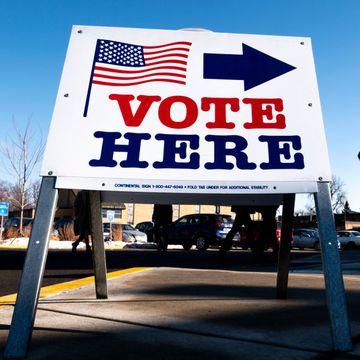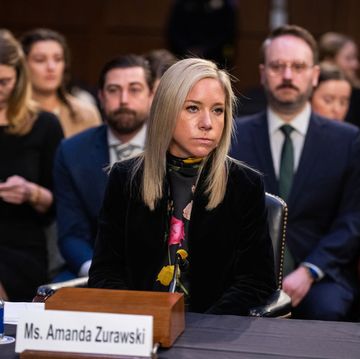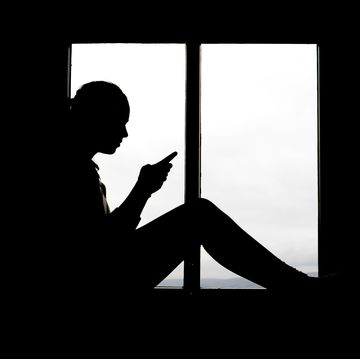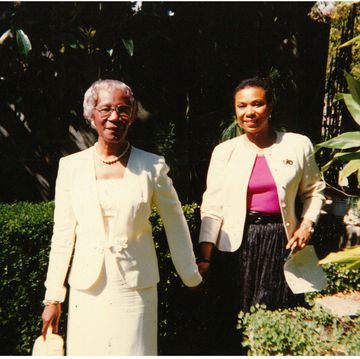"Women," Pablo Picasso once proclaimed, "are machines for suffering." Throughout his lifetime, he did his best to prove that true. Compulsively unfaithful, Picasso collected models, slept with them, and brutalized them, alternating icy control — he demanded submissiveness in all things, and warned one woman, Francoise Gilot, that as far as he was concerned, women were "either goddesses or doormats" — with horrific physical violence. Picasso pinned Gilot to a bridge railing and threatened to throw her into the river for seeming "ungrateful;" when she tried to leave, he held a lit cigarette to her cheek to brand her. He forced Dora Maar to physically fight Marie-Therese Walter, the mother of his child, for his affections — he stayed in the room throughout the brawl, painting — and beat Maar into unconsciousness himself on at least one occasion.
Yet, even though we know all this about Picasso, his violence is often downplayed or indirectly excused. On MoMA'sDora Maar page, she is labeled "Picasso's muse and lover" and "the subject for many of his paintings," not his victim. And, in the wake of Bernardo Bertolucci's confession that he intentionally staged a sexual assault for Last Tango in Paris — and the even more disturbing fact that the victim, actress Maria Schneider, had spoken about the assault eight years ago without any public outcry—we are, once again, talking about precisely how far a man can go, and how many women he can hurt, in the name of art.
The degree to which Schneider's consent was violated in the Last Tango in Paris scene remains murky. Schneider, who died in 2011, told the Daily Mail in 2007 that the rape scene in question—in which Marlon Brando pins her to the floor, smears butter on her anus, and rapes her—was not in the script. She was 19 years old, and was coerced into doing the scene because shedid not believe she could refuse: "I should have called my agent or had my lawyer come to the set because you can't force someone to do something that isn't in the script, but at the time, I didn't know that… even though what Marlon was doing wasn't real, I was crying real tears." Bertolucci maintains that the rape was in the script; only the butter was improvised. Still, he intended Schneider to respond as someoneexperiencing a real assault: "I didn't tell her what was going on, because I wanted her reaction as a girl, not as an actress," he said in 2013. "I didn't want Maria to act her humiliation, her rage, I wanted her to feel her humiliation."
Evidently, she felt it—and publicly, too. Yet, until a few weeks ago, no one paid attention. Which is not an uncommon outcome. Given how seemingly similar cases have played out, it's all too easy to imagine a world where the Last Tango in Paris rape became just one more bit of Hollywood trivia, an example of how directors push their actors to coax out great performances, or a story about how art necessitates brutality.
Chilean director Alejandro Jodorowsky, for example, has been teasing the idea of anunsimulated rape scene in his cult classic film El Topo for decades. ("I really raped [the actress]. And she screamed," he said in 1974, though he's elsewhere described the unsimulated sex in that scene as consensual.) This has not endangered his status as an avant-garde icon. Other famous cases of directors abusing their actresses—Stanley Kubrick berating and overworking Shelley Duvall on the set of The Shining until her hair started to fall out from stress, or Alfred Hitchcock driving Tippi Hedren into a breakdown by spending five daysthrowing live birds at her face—have become legendary, and are frequently praised for the "authenticity" of the performances they supposedly commanded.
It's true that Duvall seems genuinely hysterical for much of The Shining, just as it's true that Schneider's screams in the Last Tango in Paris rape scene are upsetting, and that Hedren truly does look displeased to be hit full-force in the head by a seagull. Yet by framing their abuse as a necessary evil, we're not only devaluing those women as artists—essentially, arguing that professional actresses aren't talented enough to scream or cry on camera without being tricked—but buying into a very old paradigm, in which men are the ones who make art, and women are only the tools men use to make it.
That devaluation all too easily slips into a justification for real-world violence. Take Picasso: His victims are often framed as willing participants ("Dora [Maar] was masochistic by nature," insists one biographer; "she knew what she was in for") or reduced to mere "muses," women whose chief value lies in being used for Picasso's work. (Maar and Gilot were both working artists themselves.) Nor are those incidents of abuse always motivated by purely aesthetic concerns: In the case of Tippi Hedren, Hitchcock had already sexually assaulted her off set. Replacing the safe prop birds with panicked, clawing live ones was a punishment for Hedren's refusal to sleep with him, not a cinematic masterstroke aimed at helping Hedren to convey the complex and subtle emotion that is "ouch, a bird."
Yet we let these incidents pass — and countless lesser tyrannies, from countless lesser men; everything from David O. Russellcalling Lily Tomlin a "cunt" to Lars von Triersmashing a monitor next to Bjork's head — because our idea of "art" can include male cruelty. An artist, in Western culture, is meant to be demanding, obsessive, rebellious, dangerous, and male. Female artists, meanwhile, are labeled "difficult" or "crazy" if they so much as attempt to resist male artists' aggression, often with lethal results for their own careers. When Hitchcock realized that Hedren would never sleep with him, he kept her on contract without allowing her to make any other films, until her career was over; when Gilot did successfully leave Picasso, he told every art dealer he knew not to buy her work.
The result is an art world where women are reduced to objects, mere means that men are free to exploit for their preferred ends; a world where a director staging the sexual assault of a 19-year-old actress is seen as just one more bit of Method trickery, given more or less the same moral weight as DeNiro choosing to gain weight for Raging Bull or Choi Min-Sik eating a live octopus for Oldboy. It's a world where women are reduced to props, mere machines for suffering. And in that world, the shocking and frightening thing isn't just that Schneider was assaulted. It's that no-one cared when she told us about it, and that too many stories like hers are going unheard.

















